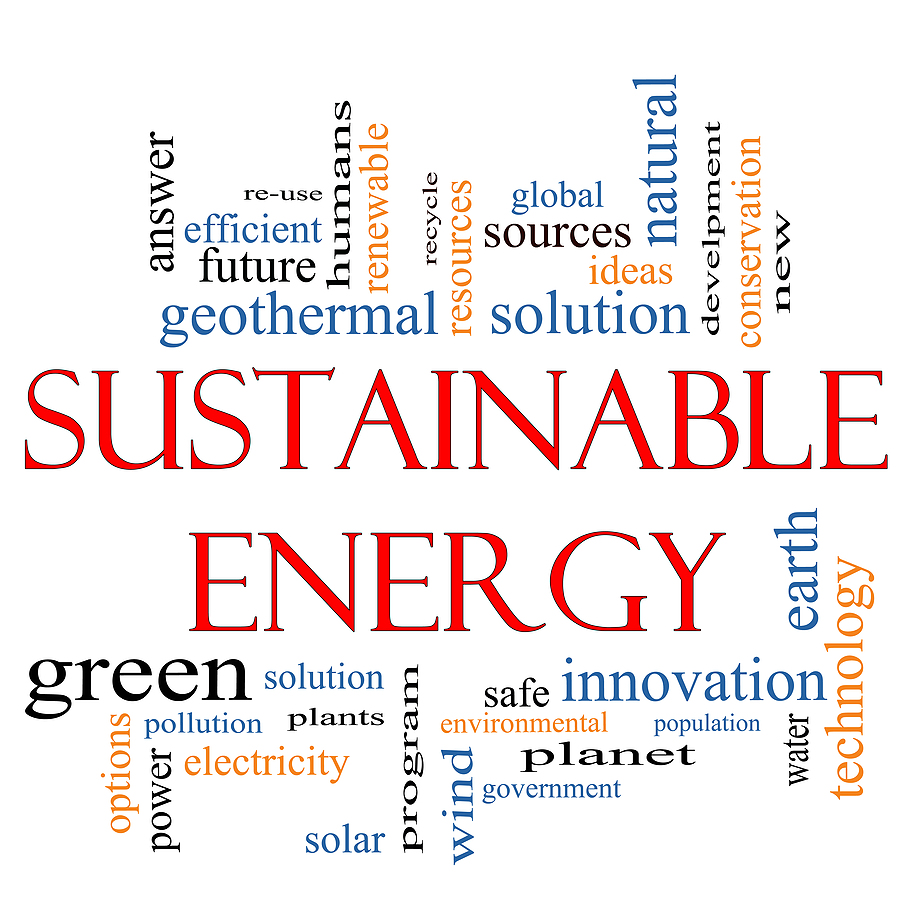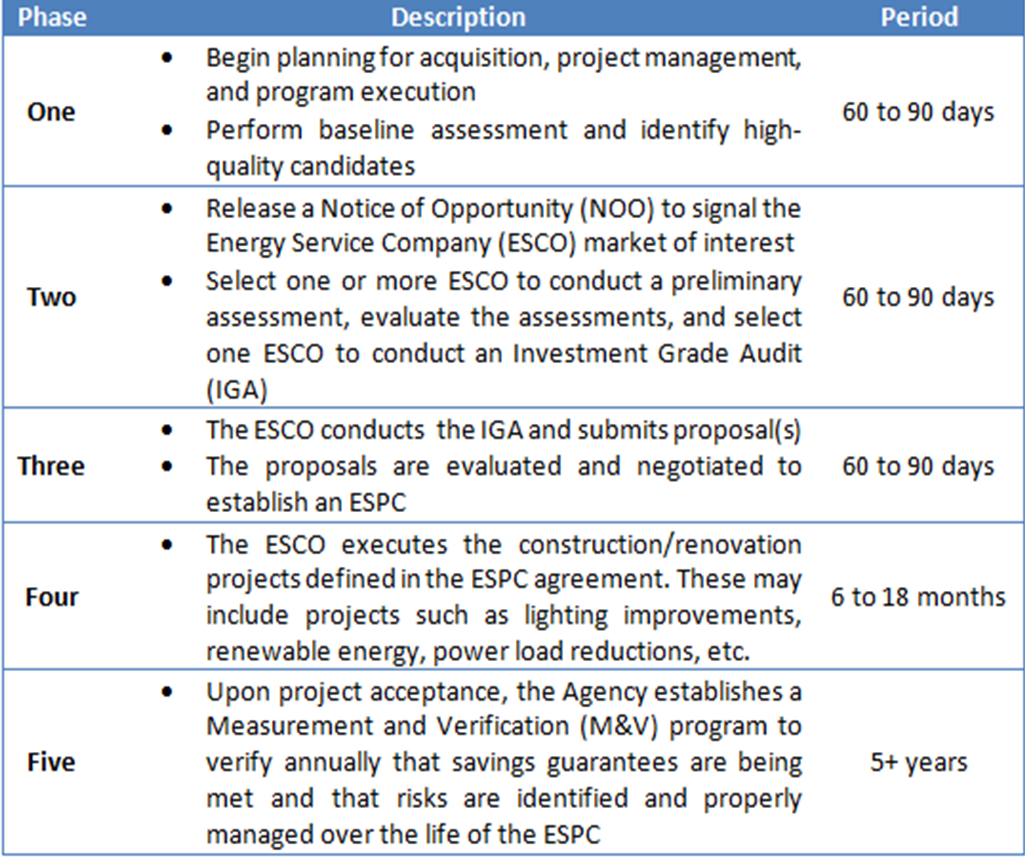 Sustainability has been a hot topic in the private sector for the past several years. Think “Clean Tech” with over $13.6 billion dollars of private equity and venture capital invested in solar energy generation, new battery technologies and alternative transportation vehicles in the last five years (according to the National Venture Capital Association). Lately, the Federal Government has been playing catch-up with the private sector by introducing progressively more stringent requirements, new sustainability initiatives, and more executive orders that encourage and mandate Federal agencies to address energy consumption and advance energy reduction efforts.
Sustainability has been a hot topic in the private sector for the past several years. Think “Clean Tech” with over $13.6 billion dollars of private equity and venture capital invested in solar energy generation, new battery technologies and alternative transportation vehicles in the last five years (according to the National Venture Capital Association). Lately, the Federal Government has been playing catch-up with the private sector by introducing progressively more stringent requirements, new sustainability initiatives, and more executive orders that encourage and mandate Federal agencies to address energy consumption and advance energy reduction efforts.
The Progression of Federal Government Involvement in the Energy Conservation Marketplace
Over the last 20 years, there has been a bi-partisan push to address national energy needs through the development of new energy sources on the supply side, and the encouragement of reduction in energy consumption on the demand side. These two approaches combine in several public legislations and executive orders that have matured greatly over the past five years. Many experts consider the introduction of the Energy Policy Act (EPAct) of 1992 to be the foundation of modern public sector involvement in the energy marketplace. It set forth basic resource conservation requirements for water management and energy management. It was followed by the Department of Defense (DoD) Authorization Act of 2004 that recognized the arduous acquisition process of the Federal government and streamlined the process for obtaining energy management services, which in recent years (2011) addressed, specifically, the competition requirements for Energy Savings Performance Contracts (ESPC). The EPAct of 2005 further defined the requirements of energy conservation and set specific targets for reduction in energy consumption, as did the Energy Independence and Security Act (ESIA: pronounced “ē-sah”), and Executive Orders 13423 and 13514, established by President Bush and President Obama, respectively. In fact, these documents set forth goals of a 30% reduction in energy use by federal buildings from 2006 through 2015; and a 16% reduction in water use by federal buildings from 2008 to 2015. Most, if not all, of these documents refer to Energy Conservation Measures (ECM) as a way to achieve these (and other) goals.
What Exactly Are Energy Conservation Measures?
Energy Conservation Measures (ECM) are the government’s way of categorizing means and methods that Agencies can use to achieve the goals set out by the various executive orders and public laws. The ECM include items such as the installation of Building Automation Systems (BAS) and advanced metering, upgrades to lighting and HVAC systems, switching to renewable energy sources, and a renewed focus on continuous load management. ECMs are often categorized according to the following areas, or other similar groupings:
- Mechanical or Heating Ventilation and Air Conditioning (HVAC): Oftentimes, these measures can be as simple and low cost as installing occupancy-based controls, such as motion sensors, and programmable thermostats. It can also include rezoning a building, upgrading the chiller or boiler plant, and installing more efficient systems, such as geothermal. These upgrades can easily be the most expensive among all ECMs.
- Lighting: Replace older lighting with more efficient fixtures and upgrade bulbs in existing fixtures. Install day lighting controls and do not forget about the site lighting by installing motion sensors, timers, and more efficient bulbs in existing exterior light fixtures.
- Energy Sourcing and Management: Typically, energy is consumed by buildings as electricity generated from fossil fuels. This consumption can be reduced by installing solar energy; wind power; cogeneration plants; or capturing, storing and reusing energy that might otherwise be lost in normal operations. Often, energy use in a building is poorly understood, due to a lack of metering to collect data or the lack of analysis of existing data. Resetting timers, installing motion sensors, or turning off redundant Ethernet connections can be low cost initiatives, but rely on effective energy management data collection, interpretation, and reporting.
- Load Reduction - Building Envelope: The primary elements for reducing the load on a building involve installing better wall and ceiling insulation, replacing inefficient windows/doors, caulking and sealing air leaks, and installing “green” roofs. These projects reduce the overall demand for energy by the building systems and control the exchange of controlled climate.
- Load Reduction - Power Management: Reduce plug loads by restricting personal printers, etc., switching to energy saving office equipment (i.e. Energy Star rated), and installing automatic shutoffs for equipment that is not used often. It is also important to integrate these ECMs with the latest initiatives in cloud-based computing. The majority of plug load demand is generated by server rooms, which can be managed by consolidating fragmented data centers, as well as increasing capacity and reducing redundancies by moving to cloud technologies.
- Equipment: This is somewhat specific to the use of High Efficiency (HE) and Variable Frequency Drive (VFD) technologies for motors and pumps. These types of implementations can help extend the equipment lifecycle and service life; increase throughput while reducing total usage; and reduce power loads.
- Water Use and Treatment Systems: These projects are designed to reduce the overall consumption of water by installing low flow fixtures, treating and recycling water for use in “gray water” scenarios, and moving towards timed or instant water heaters.
- Operations and Maintenance: This can be as simple as establishing and executing a program that includes routine inspections and cleaning of equipment, such as air coils. It also includes commissioning and retro-commissioning to establish performance baselines and measuring against optimal performance.
Near-term Impacts on Federal Government Agencies
As of today, there are two primary ways to implement ECM projects. The first is through traditional appropriation methods through congressional budget requests. In this process, the Agency would draft capital investment plans to include ECM projects in future budget requests. This process can take two years at a minimum, more if the projects require prospectus review and approval, in which case, the Agency must draft Exhibit 300 documentation and possibly go through multiple rounds of passbacks until the project(s) are approved. This could add many more months to the process, and delay critical milestones in agencies’ sustainability strategies.
Alternatively, agencies can use Energy Savings Performance Contracts (ESPC) to address ECM implementation plans. This allows federal agencies to engage private sector Energy Savings Companies (ESCO) to leverage private financing mechanisms to invest in energy efficiencies in exchange for the cost savings that these investments generate. To learn more about the ESPC process read my article on Energy Savings Performance Contracts in the Federal Government.
 The Counselors of Real Estate (CRE) recently identified common cross-industry issues that are impacting real estate executives. These issues cover shifting demographics, capital markets, new uses of technology, and the role of sustainability. My interpretation of the results are below:
The Counselors of Real Estate (CRE) recently identified common cross-industry issues that are impacting real estate executives. These issues cover shifting demographics, capital markets, new uses of technology, and the role of sustainability. My interpretation of the results are below:


